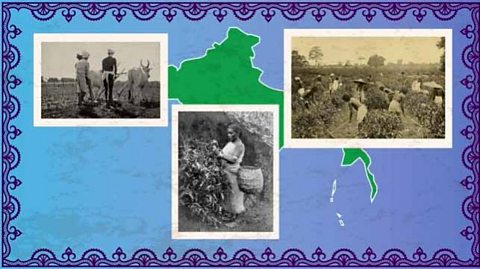Key points
- By the 1870s, many European countries were looking to expand their control in Africa.
- At the Berlin Conference in 1884, the USA, the Ottoman Empire and 12 European countries divided up most of the African continent between them. This is known as the ‘Scramble for Africa’.
- We can still see the impact of the ‘Scramble for Africa’ today, in the languages spoken in former African colonies, how their governments work and how their education systems are run. These changes often came at the expense of African languages, cultures and systems that existed before colonisation.
Activity - what can you infer?
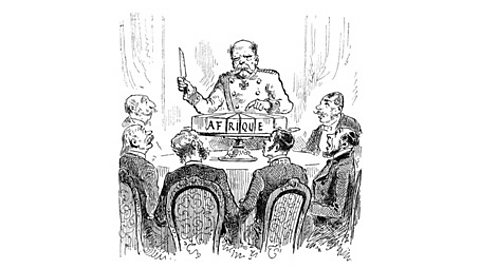
This cartoon was produced in France in 1885. It represents the events of the Berlin Conference, an important turning point in the ‘Scramble for Africa’.
Have a look at the cartoon, and then answer the questions below:
1. What does the cake represent?
2. Who do you think the man holding the knife might be? Where do you think he is from?
3. Who is not represented at the table?
- The cake represents the continent of Africa. It is being divided up and given to other European countries.
- The man holding the knife is Otto von Bismarck, the Chancellor of Germany. Although he was from Europe, he organised the 1884 Berlin Conference during which Africa was divided between several European nations.
- There is no one from Africa at the table. African kingdoms and territories were not given a say in how their continent was to be divided.
Early colonisation of Africa
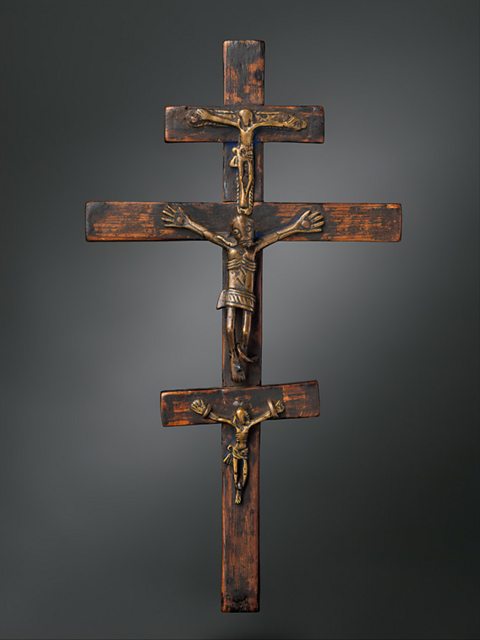
The relationship between Europe and Africa dates back as far the 1200s, when Arab merchantA person involved in buying and selling items, usually between different countries. In the British Empire, this was done using a lot of force and violence when local people did not cooperate with the merchants. traded gold with powerful African kingdomsThere have been many African kingdoms throughout history, including the Mali Empire and the Kingdom of Benin. Many of them traded in gold with Arab nations, and were often richer than European kingdoms in the medieval period. and then went on to trade in Europe.
By the 1480s the Portuguese had started to settle along the west coast of Africa in the Kingdom of Kongo, trading guns and cloth in exchange for enslaved prisoner of warA person who is captured and held by the forces of the opposing side during a war.. By the 1600s, this relationship formed part of the beginning of the transatlantic slave trade, which wasn’t abolished until the early 1800s.
Up until the 1870s, European countries largely stuck to coastal areas of Africa. They focused on setting up trading relationshipRelationships built between European and African merchants, which allowed them to buy and sell goods. Sometimes these relationships became violent and the Europeans used force to get African merchants to trade with them. and small bases that would help them travel around the coast of Africa to trade in Asia. 10 per cent of the continent was controlled by European countries at this time:
| Colony | Controlled by |
|---|---|
| Angola | Portugal |
| Mozambique | Portugal |
| Cape Colony | Britain |
| Algeria | France |

Why were European countries rushing to gain control of Africa?
European countries mainly set up trading postA place controlled by a European country for trading goods. along the coast, because not much was known about inland AfricaThe areas inland that were more difficult for European colonisers to reach because of tropical diseases and resistance from the people who lived there.. When European explorers had tried to travel further inlandThe part of a country that is not situated on the coast., they faced several challenges:
- They were often killed by tropical diseasesInfectious diseases that are common in hot climates., such as malaria
- They were pushed back or killed by indigenous peopleThe people who originate in a particular area, rather than those who migrated there. protecting their land
- They got lost and ran out of resources, dying of starvation or dehydrationWhen the body does not get as much water as it needs. In severe cases it can lead to death.
However, that changed when people like King Leopold IIThe King of Belgium from 1865 to 1909, and ruler of the Congo Free State from 1885 to 1908. of Belgium set up the International African Association in 1876 to research inland Africa. They discovered that the continent had an abundanceA very large amount of something. of natural resourceMaterials that grow or can be found in a particular area., including:
This brought lots of attention to the African continent. Historically, European countries had only been interested in small trading posts, but following King Leopold II’s research, they were now rushing to gain control of huge parts of land that would give them access to gold and riches.
As the transatlantic slave trade had ended, many European powers saw the chance to gain new colonyA country, state or territory ruled over by another country, state or territory. as a solution to maintaining power and wealth.
The Berlin Conference
In 1884, a conference was called by the German ChancellorThe title given to the head of the German government., Otto von Bismarck. In addition to the USA and the Ottoman EmpireThe Ottoman Empire was an empire that controlled large areas of southeastern Europe, western Asia and north Africa from the 1300s to the early 1900s. It was founded in the north-west of modern-day Turkey., 12 politically powerful European countries were invited, including:
- Germany
- Britain
- Belgium
- France
- Portugal
- Italy
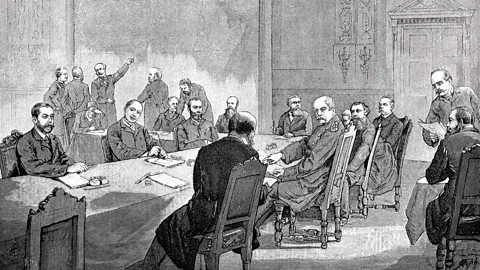
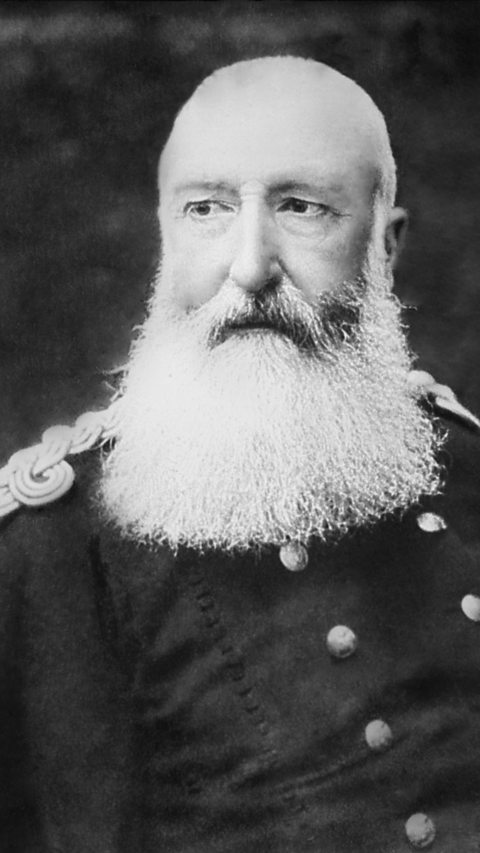
The conference’s main purpose was to decide how Africa would be divided between the European countries, while avoiding war with each other.
There were no African representatives at this conference, despite the fact that it would have a significant impact on Africa and its people.
Thousands of Africans were killed by European forces as each nation claimed the territory they decided was theirs. This process became known as the ‘Scramble for Africa’. However, historians have recently started to refer to the events as the ‘Partition of Africa’ or the ‘Conquest of Africa’.
In addition to the continent being divided up amongst European countries, King Leopold II was given the Congo Free State as his own personal possession. The Congo Free State is now known as the Democratic Republic of the Congo.

After the Berlin Conference, what happened in the Congo Free State?
King Leopold II promised that the Congo Free State would be an area where Africans could trade freely. He also said that he would carry out charity projects in the region. However, this did not happen.
Instead, he demanded that Africans living in the Congo Free State produce a specific amount of rubber and ivory to increase his personal wealth. If these demands were not met, punishments included death, taking family members hostage, amputation and even burning entire villages to the ground.
Many people tried to resist, but Leopold’s personal army ended these rebellions and punished people who resisted severely.
As a result, millions of people died under the brutal rule of King Leopold II. Many historians estimate that as many as 10 million people were killed, though the actual figure may be higher.
The international response to the cruel treatment of Africans forced King Leopold II to make the Congo Free State a colony of Belgium. It was then known as the Belgian Congo, until it gained its independence in 1960 and became the Democratic Republic of Congo.
Map - Africa by 1914
Africa divided: a new stage in the British Empire
In the 1870s, around 10 per cent of the African continent was controlled by European countries. By 1914, this had increased to 90 per cent. Ethiopia and Liberia were the only African countries not under European control, though Italy would briefly occupy Ethiopia in 1936.
Some historians argue that the period after the Berlin Conference should be known as the second stage in the British Empire, as Britain gained 20 new colonies. It became one of the most powerful European nations. The following modern-day countries are some of those that were colonised by Britain after the ‘Scramble for Africa’:
- Kenya
- Uganda
- Zimbabwe
- Botswana
- Malawi
Germany was forced to give up its colonies as punishment for its defeat in World War One. Some of these colonies were given to Britain, which further increased its strength and influence in Africa.
What was the impact of colonisation on African countries?
The impact of British control over countries such as Nigeria, Ghana and South Africa can still be seen today with, for example, English being the most commonly spoken language. During the colonial period English was in some cases forced on the indigenous population, and speaking African languages was sometimes forbidden. As a result of English becoming a dominant language, some African languages have been lost.
The impact of British rule can also be seen in these countries’ styles of government and education systems, which in many ways are similar to the British systems of government and education. This was a result of British systems of government and education replacing those of the indigenous people before colonisation. Many of these systems were lost, and the indigenous people were given no choice but to comply with the newer systems.
British colonisation also had significant economic impacts on Africa, the effects of which can still be felt today. The British exploited many of their African colonies for natural resources, such as gold, rubber and oil, making huge profits which went back to Britain. Even as African countries such as Ghana have grown their economies by becoming popular tourist destinations, they are still working to compensate for the huge loss of natural resources that took place under British rule.
At certain points in history, parts of Africa that were colonised have had to deal with the effects of a lower population, which include a smaller workforce and the breaking up of communities, due to the following events:
- The forced transportation of an estimated 12.5 million African people as part of the transatlantic slave trade
- The diseases Europeans brought to the West African coast, which later spread to other colonies and killed many people
- The numerous violent events that were carried out by the British to take and maintain their control of their African colonies, such as the Mau Mau Uprising
British Empire overview activity
Learn more about some of the key events in the history of the British Empire with this activity.
Test your knowledge
Play the History Detectives game! gamePlay the History Detectives game!
Analyse and evaluate evidence to uncover some of history’s burning questions in this game.

More on The British Empire
Find out more by working through a topic
- count1 of 4

- count2 of 4
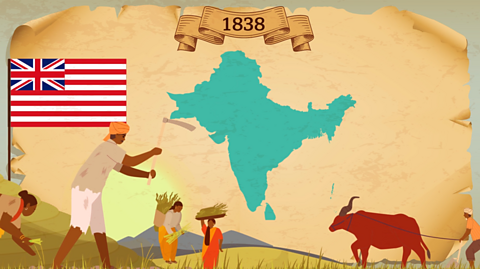
- count3 of 4
